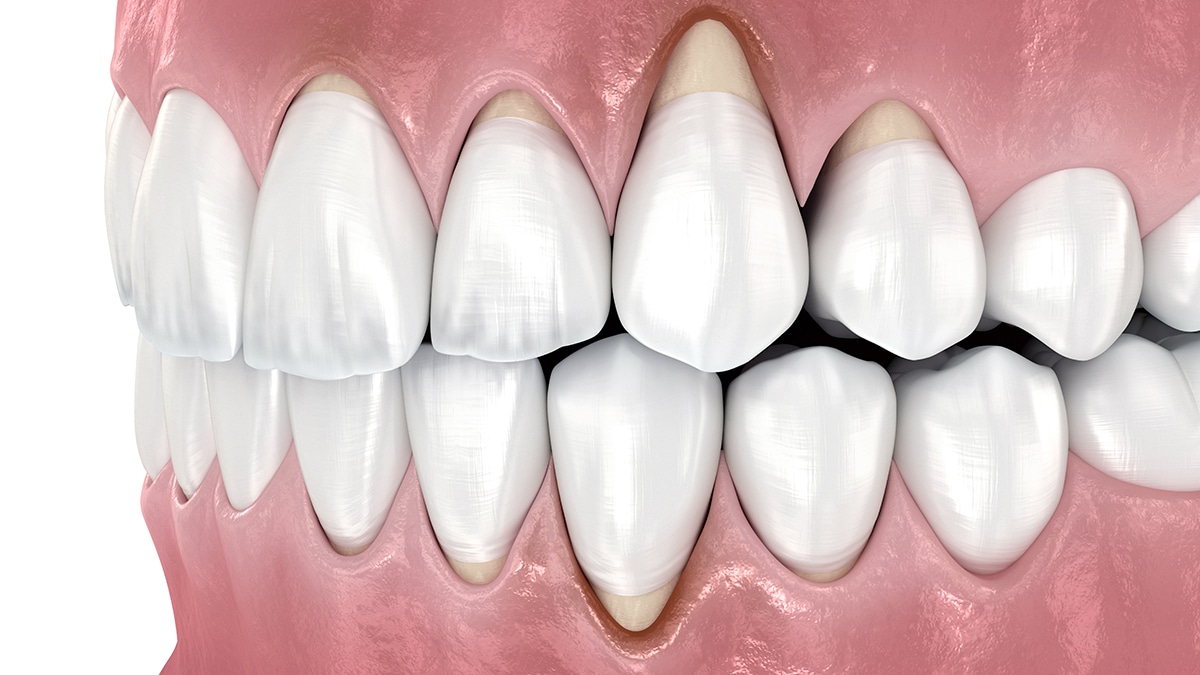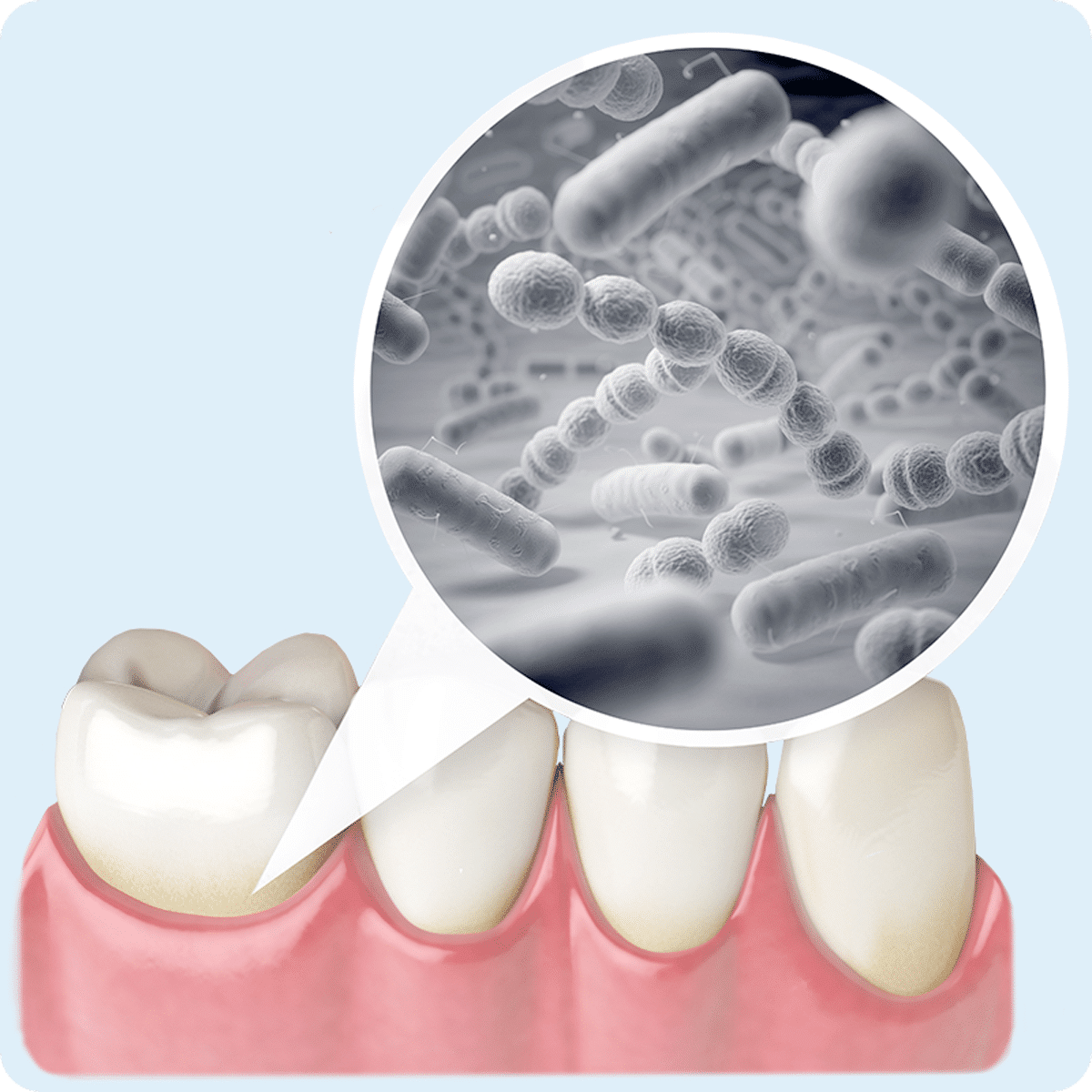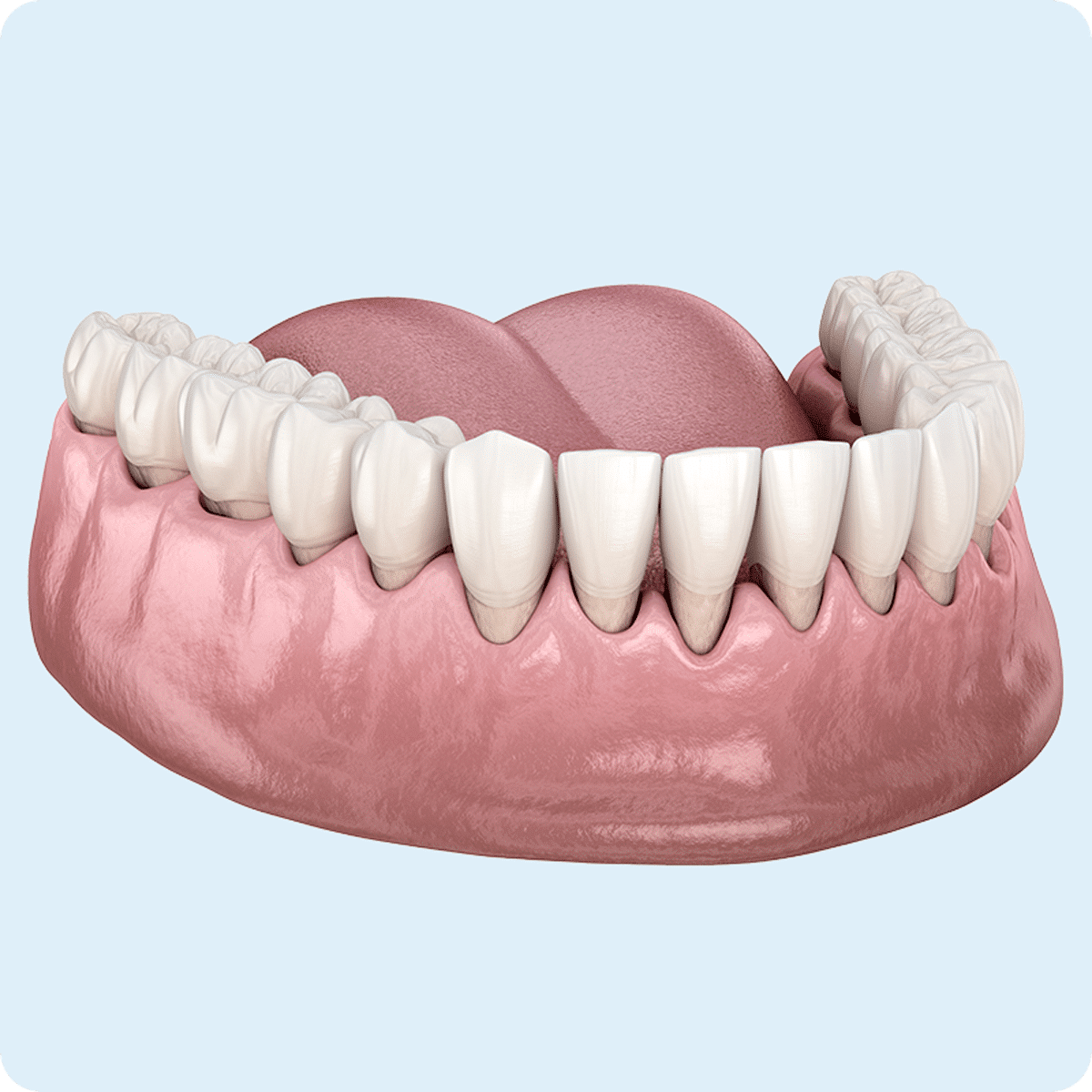Patients from Switzerland and Germany trust our experienced periodontists, who treat more than 500 cases of periodontitis every year. Take our periodontitis self-test, find out how periodontitis develops and how we effectively treat periodontitis and periodontosis in our dental practice.

Remember: In the case of periodontitis, there is no pain or symptom to indicate that something is wrong. Even the famous bleeding gums often do not occur. Only the bad breath that now appears indicates the presence of a lot of bacteria. The only way to detect gum inflammation and the resulting gum recession is therefore to have it checked as part of a dental examination.

A bacterial inflammation of the gums caused by bacterial plaque on and under the gum line.

“Over 70% of adults over the age of 50 in our western world have inflamed gums. We recognize periodontitis immediately and have the DR. HAGER periodontitis concept to effectively combat and ultimately cure this widespread disease. Our success rate is 99.5%.”
Lisa Sophie Dreier
Due to ineffective tooth brushing techniques, bacteria can accumulate on the periodontium and form a permanent biofilm (plaque), as is the case with caries.
After an initial simple gingivitis (inflammation of the gums), the bacteria penetrate the gums. This leads to a bacterial infection and thus to inflammation: periodontitis, or more precisely chronic periodontitis marginalis profunda. Many people also refer to the disease as periodontitis. The gums around the tooth are chronically inflamed.
This means that the inflammation does not hurt and is kept below a certain level by the body’s defenses. However, it progresses imperceptibly and the bacteria slowly destroy the connection between the tooth and gum, resulting in gum recession. The result is a periodontal pocket, a gap between the tooth surface and the surrounding soft tissue, filled with bacteria.
But that’s not all: after some time, this bacterial inflammation spreads to the underlying jawbone and destroys it. As a result, the tooth lacks support and becomes loose, even leading to tooth loss.

The bacteria gradually destroy the connection between the tooth and gum. As a result, the bone is broken down and the tooth becomes loose, leading to tooth loss.
In the case of severe periodontitis, it may be necessary to remove teeth that would otherwise jeopardize the success of the therapy. Long-term treatment success is particularly important for this disease.